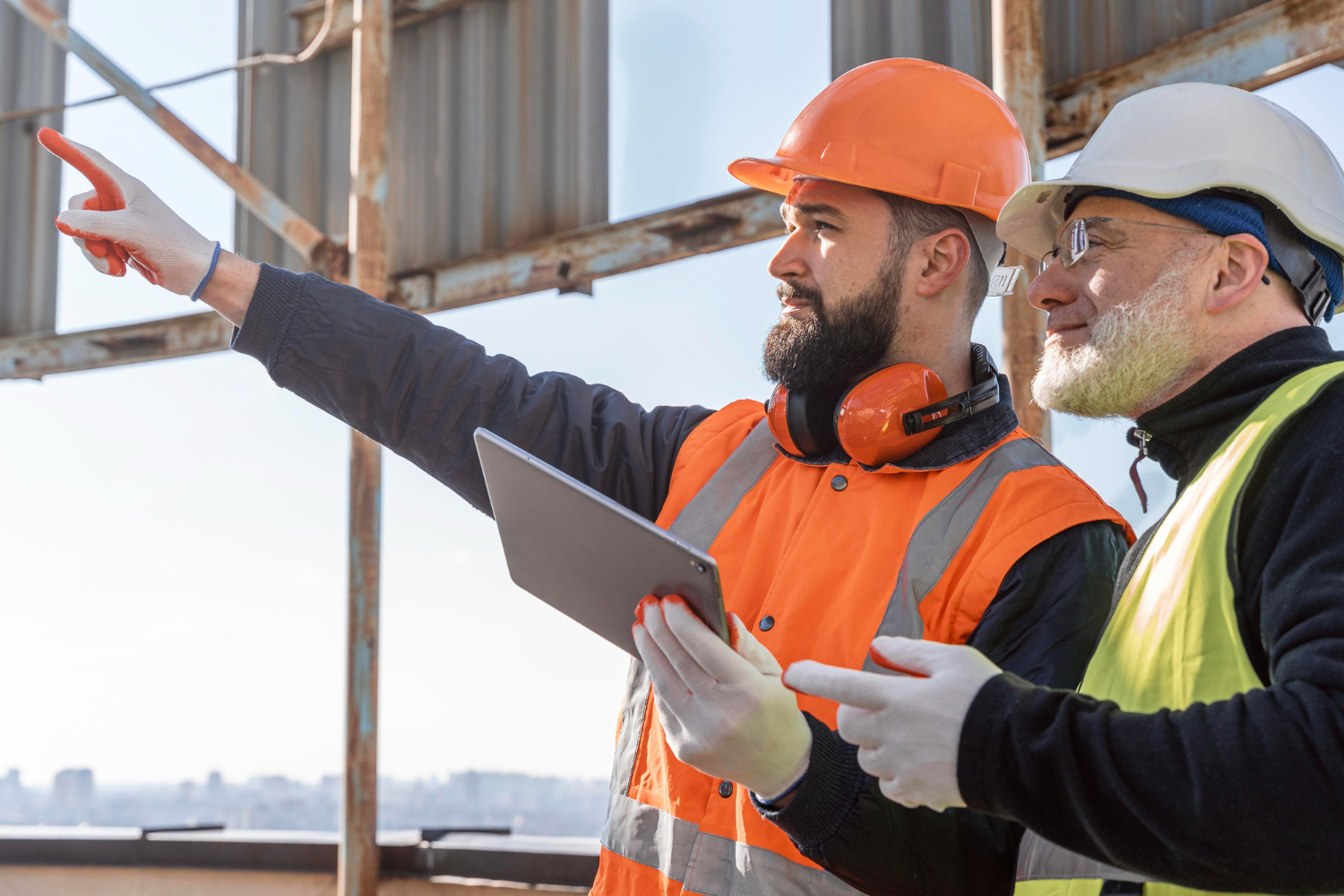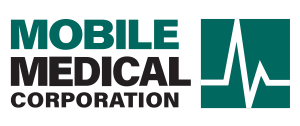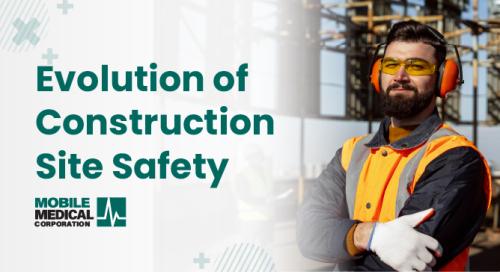The importance of construction site health and safety cannot be overstated; it is the backbone of a workforce's well-being and the cornerstone of a project's success.
In this post, we'll take a journey through history, examining how construction site safety has transformed from the precautions of the past to the sophisticated protocols of today. Join us as we discuss where we've been, where we are, and — most importantly — where we're heading in the landscape of construction health and safety.
The Early Days of Health and Safety in Construction
In the Pre-Industrial Revolution era, construction sites were extremely treacherous. Workers faced daily hazards without the protection of formal safety measures, relying solely on their wits and experience to avoid accidents.
Pre-Industrial Revolution Conditions
Before the dawn of the Industrial Revolution, construction health and safety was a vastly different environment from what we know today. Safety was a concept rooted more in personal caution than in any systematic approach. There were no governing bodies to enforce safety regulations, no standardized protective gear, and no training programs to educate workers on the potential risks they faced each day. The absence of formal safety measures left workers vulnerable, with little more than common sense (and luck) to shield them from harm.
The Industrial Revolution and Its Impact
This period of rapid industrialization gave rise to large-scale construction projects that were unprecedented in complexity. Towering factories, expansive bridges, and the skeletal frames of the first skyscrapers began to punctuate the skyline — the dawn of modern engineering. Luckily, this bold leap forward included a growing recognition of the human cost of construction.
The Beginning of Safety Considerations
Coupled with a growing labor movement, the higher incidence of workplace accidents started to draw attention to the need for improved working conditions. Some forward-thinking industrialists began to implement rudimentary safety measures, such as providing safety nets to catch falling workers or installing guards on machinery to prevent injuries. These early steps were the precursors to the formal safety regulations that would develop in the 20th century, laying the groundwork for a future where the health and safety of construction workers would be given the attention it deserved.
The Birth of Construction Safety Regulations
The introduction of labor laws and the establishment of safety standards marked a turning point in construction site safety. It was a period of profound change, where support for workers' rights reached the halls of legislation; the concept of a safe workplace finally began to take legal form.
The 20th Century: A Turning Point
The 20th century marked a pivotal moment in the history of construction safety, as the rapid pace of industrial growth finally met with the burgeoning demand for worker protection. This era saw the introduction of labor laws that began to reshape the relationship between employers and their workforce, with an increasing emphasis on the right to a safe and healthy work environment for all.
The Introduction of Labor Laws
The early 1900s witnessed a series of labor laws that aimed to address the harsh realities of industrial work. Governments started to recognize the need for regulations that could mitigate the risks faced by laborers. These laws began to lay down the legal framework for working hours, compensation for injuries, and the responsibility of employers to provide safer working conditions.
Key Legislation and Standards

The journey of establishing a safer construction environment is marked by critical legal milestones and the collective efforts of various regulatory bodies, each playing a vital role in the ongoing narrative of worker protection.
The Occupational Safety and Health Act (OSHA)
A landmark moment in the history of construction safety came with the introduction of the Occupational Safety and Health Act in 1970. OSHA represented a significant step forward in the fight for workers' safety, setting a comprehensive set of regulations that employers were legally obligated to follow. The act established the Occupational Safety and Health Administration, which was tasked with enforcing safety standards, conducting workplace inspections, and providing training to both employers and employees.
The Role of Other Regulatory Bodies
OSHA was just the beginning! Over time, other regulatory bodies have played a crucial role in advancing construction safety. Organizations such as the American National Standards Institute (ANSI) and the National Fire Protection Association (NFPA) have developed specialized standards that address various risks associated with construction work. These bodies work in tandem with government agencies to ensure that safety regulations are up-to-date with the latest technologies and practices in the industry.
Technological Advancements in Safety Equipment
As we continue to push the boundaries of what's possible, technology plays a pivotal role in enhancing construction site safety. From personal gear to the machinery that powers projects, technological advancements have led to significant improvements in safety equipment.
Personal Protective Equipment (PPE)
Gone are the days of simple hard hats and leather gloves. Today's PPE involves a sophisticated array of gear designed to provide maximum protection against a multitude of hazards. Modern helmets come with impact sensors, visors are equipped with augmented reality, and gloves are reinforced with cut-resistant materials. Even the humble safety boot has been re-engineered to provide better grip, support, and resistance to the elements.
The Impact of Technology on PPE Effectiveness
Wearable tech integrated into PPE can now monitor a worker's vital signs, alert them to hazardous conditions, or even track their location to ensure they are in a safe zone. These advancements have made PPE more effective than ever, significantly reducing the likelihood of injuries and enabling a faster response when accidents do occur.
Safer Construction Equipment
The machinery used in construction has also undergone a technological revolution. Modern equipment comes with enhanced safety features such as automatic shut-off systems, proximity sensors, and improved operator cabins that provide better visibility and protection. These features help to prevent accidents by ensuring that machinery is only operational when it is safe to do so, and by reducing the risk of operator error.
The Role of Health and Medical Services on Construction Sites
The construction industry necessitates a robust health and medical services system to safeguard the workforce. Over time, the approach to medical interventions on construction sites has evolved from basic first aid to comprehensive wellness programs that address both physical and mental health.
On-site Medical Staff and Facilities
As the industry progressed, larger construction projects began to see the value in having on-site medical facilities. This could range from a nurse stationed in a temporary on-site clinic to a full medical team capable of handling a wide array of medical emergencies. These facilities ensured that workers received prompt medical care, minimizing the downtime associated with off-site medical treatment — and reducing the severity of work-related injuries through immediate intervention.
Mental Health and Wellness Programs
Recognizing that physical health is only one aspect of a worker's well-being, modern construction sites are increasingly incorporating mental health and wellness programs. These initiatives address the stress, anxiety, and other mental health challenges that can arise from high-pressure work environments. Services such as counseling, stress management workshops, or wellness activities contribute to a more holistic approach to the health of construction workers, ultimately fostering a more productive workplace.
Training and Education for a Safer Workplace

The construction industry has long recognized that a well-informed workforce is the foundation of a safe workplace. As technologies evolve, so too does the approach to safety training and education. This critical component of construction site safety ensures that every worker is equipped not only with the right gear but also with the knowledge and skills to use it effectively.
Mandatory Safety Inductions
The first step in fostering a culture of safety on any construction site is mandatory safety induction. These sessions are crucial in acquainting new workers with the specific hazards and safety practices of a site. During these sessions, workers learn about emergency procedures, site-specific risks, the correct use of PPE, and the importance of reporting hazards. This foundational training is essential in setting the standard for safety from day one.
Continuous Education and Drills
Regular refresher courses, safety drills, and educational seminars keep safety at the forefront of workers' minds and ensure that they are up to date with the latest safety protocols. Drills, in particular, are vital in preparing workers for emergencies, ensuring that if the worst should happen, everyone knows how to respond swiftly and effectively.
Advanced Training for High-Risk Tasks
Certain tasks on a construction site carry higher risks than others, and workers performing these tasks require advanced training. This specialized training covers areas such as working at heights, operating heavy machinery, or handling hazardous materials. It is designed to provide workers with in-depth knowledge and hands-on experience, reducing the likelihood of accidents and ensuring that high-risk tasks are performed with the utmost care.
The Future of Construction Site Health and Safety
The rapid advancement of technology is paving the way for a new era in protecting our construction workforce.
Wearable Tech for Health Monitoring
Smartwatches, fitness bands, and even smart clothing are being adapted for use on construction sites. These devices can monitor heart rates, detect falls, and even alert workers to potential hazards such as heat stress or overexertion. By providing real-time data on a worker's physical condition, interventions can be made swiftly, preventing accidents and ensuring that health concerns are addressed before they become serious.
Drones and AI for Safety Inspections
Drones equipped with high-resolution cameras and AI-powered analytics are set to transform safety inspections on construction sites. These machines can access hard-to-reach areas, providing a bird's eye view of the site and identifying potential safety breaches without putting human inspectors at risk. AI algorithms analyze the collected data to predict accidents, ensuring that safety measures are proactively managed.
The Role of Leadership in Fostering a Safety Culture
Leadership plays a pivotal role in embedding health and safety into the basis of construction culture. It is the responsibility of industry leaders to champion safety initiatives, provide the necessary resources for safety programs, and ensure that all levels of the organization are engaged in creating a safe working environment. By setting a positive example and prioritizing safety, leaders foster a culture where every employee feels valued and protected.
Embrace the Future of Workplace Safety with MobMed!
We recognize the importance of a holistic approach to construction safety, where every element of employees' health and well-being is put first. We'll work with you every step of the way to create a wellness plan tailored to your specific needs — because your employees deserve it!
For more information on employer medical clinics, please contact our Employer Health Services division. We'll assist you with implementing on-site primary care to ensure your employees receive the right support for a healthier, happier life!



